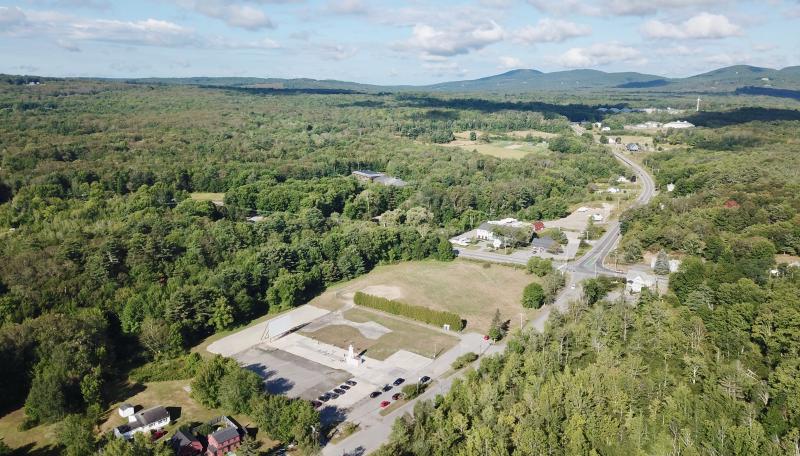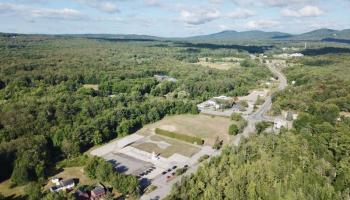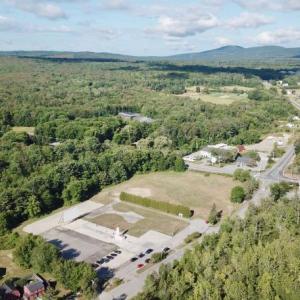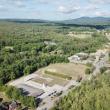Experts urge Rockport to be thoughtful about redeveloping the RES site
Members of the RES Redevelopment Task Force heard appeals from professionals in the real estate and architectural fields Oct. 6, advising against taking hasty action to sell or develop an 7.7-acre parcel of town-owned land in the current economic climate. The Task Force was assembled to redevelop the property at the intersection of Routes 1 and 90 where the former Rockport Elementary School (RES) once stood.
Members in attendance during a virtual meeting included Martin Cates, Amanda Dwelley, Janet Hall, Mary Stevens, Town Manager Bill Post, Select Board liason Debra Hall and Stephen Smith of Rockport’s Parks and Beautification Committee.
"I don't know how sustainable what we have going on in the market right now is going to be sustainable... There's a pressing need for things to happen in Midcoast Maine, certainly on that site, but right now there's the market shift that's been going on,” said task force member Cates, a longtime real estate agent in the area.
Cates asked the group if some elements of their initial mission statement, and goals in an RFQ (request for qualifications) that was sent to potential developers, were still viable in the current economic climate and the wake of a pandemic.
“On a statewide basis – I’ve been doing this for 28 years– I haven’t seen what we have going on in the market right now... and it would concern a little bit for the committee and the area to be making decisions based on what’s been happening for the last six months. I think we’re in a unique time right now,” said Cates.
In 2019, the Rockport Select Board created the RES Redevelopment Committee to pursue a plan for the vacant lot. The cleared and level land, made so after the former Camden-Rockport Elementary School was torn down, at the high-volume intersection of routes 1 and 90, is regarded by some as the “gateway” to Rockport Village.
Select Board Chairwoman Hall was one of the founding members of the RES Redevelopment Committee along with former Board Member Doug Cole.
Last summer a request for qualifications was circulated to potential developers, soliciting ideas.
The “principles of development” were that any project on the parcel must contribute to Rockport’s tax base and is aesthetically pleasing while maintaining some of the lot’s undeveloped or green space.
The portion of the RFQ titled “Project Vision” included such amenities as seating areas, a “market space” for artisan workshops or a farmer’s market, as well as adding outdoor seating areas and a performance space or amphitheater to the site in addition to retail spaces, residential housing, elder care, day care, pet care and a welcome center or historical center.
The town has received two proposals for possible projects, one a housing/commercial complex; the other, an office building proposed by the Allen Agency. Neither proposal has been discussed by the Select Board.
“Because of the pandemic, both of the proposals submitted have not been considered or discussed by the Task Force or the Select Board at this point,” said Town Manager Bill Post in an email, responding to questions about the status of the proposals. “I believe that the first proposal is no longer on the table, but the second proposal is. Depending on how we move forward, Allen Financial may have the opportunity to revise and resubmit, but that remains to be seen at this point.”
At the Oct. 6 meeting, Cates outlined the current commercial real estate market.
“Lenders have really pulled back on commercial projects, commercial sales...I think they're concerned, and rightfully so, about how well people will be funded long term,” said Cates.
He said that there is a national need for residential housing at the moment, and that one of the most important factors for people looking to relocate is the availability of reliable, high speed internet so that they work from home. He acknowledged that there is a demand for senior or “accessible” housing, but asked the group whether affordable residential housing could be built and maintained at that location.
Task Force member Mary Stevens asked her fellow group members why the initial plan had been to sell the property to a developer, rather than first hire an architect or construction company to create a master plan for the site.
Architect Steve Smith, whose designs were chosen for the new Rockport Public Library, advised the group to pay to have a market study completed, which would define which portions of the site would be recreational, residential or commercial, and also gather public opinion from Rockport residents regarding a vision for the site before the project is sent to developers.
“I think it was assumed from the beginning that the Town’s not in the position of being a developer and having to pay the costs of construction and all that, I think we’d be hard pressed to do that,” said Hall, adding that there is currently no money in the municipal budget set aside for fees associated with a market survey. Instead she suggested a “visual preference” survey could be conducted among Rockport residents for free.
“If you let the developers take the lead on this project, this project will never get approved by the town,” said Smith.
“I agree with you that we maybe need to do the master plan, I’m not disputing that,” said Hall. “What I’m saying is that there’s no money in the budget for it so I’m encouraging the Task Force to look at things that we do without the expenditure of funds.”
“If you don’t have the money, don’t proceed with the project until you do it properly,” said Smith.
He added that a “wish list” compiled by the focus groups Hall suggested “doesn’t amount to anything until you get a market study to find out if it makes any sense financially.”
Post said the decision to sell the town-owned land to a developer will ultimately be made by Rockport residents as it requires a town vote. The group also discussed their thoughts on a presentation made by land use consultant and planner Terry DeWan to the Select Board the previous week.
DeWan said that three of the key elements of a project at the former RES site include a plan for an area of open, undeveloped space on the property, its relationship to the neighborhood and the “face” or outward appearance of the development to passersby.
He said that some of the initial measurements in the RFQ, such as a 20,000 square foot footprint for buildings, may be too large, and that instead the town should look to high-density buildings for residential housing.
DeWan also suggested that the Select Board or members of the RES Task Force reach out to developers who did not submit proposals for the site and ask them why, and consider what incentives the town could offer a potential developer to take the project on. Dwelley asked DeWan what he perceived to be the biggest barriers associated with this project, as they are perceived by potential developers.
“There are a lot of unknowns. Market unknowns, but also the notion of whether the town will go along with the idea and the fact that it’s going to a town vote,” said DeWan. “I wonder if it’s necessary that [a project] goes to a town, knowing that it will go through a Planning Board process and will have a public hearing during that process. If it goes to the Department of Environmental Protection there will be public information meeting and they will be able to hear a lot of the neighbors’ concerns.”
The next meeting of the RES Redevelopment Task Force will be held Nov. 10 at 5:30 p.m.
Event Date
Address
United States





























